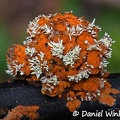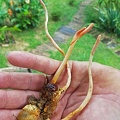25/48
Home / Cordyceps Colombia 2020 /
Gibellula pulchra growing from a tiny spider in Mocoa. Fitting species name: "pulchra" meaning beautiful in Latin. However a spider might miss the beauty aspect in a Gibellula infection.
- Created on
- Saturday 14 March 2020
- Posted on
- Tuesday 31 March 2020
- Albums
- Visits
- 12349
- Make
- NIKON CORPORATION
- Model
- NIKON D850
- DateTimeOriginal
- 2020:03:14 08:41:50
- ApertureFNumber
- f/16.0

